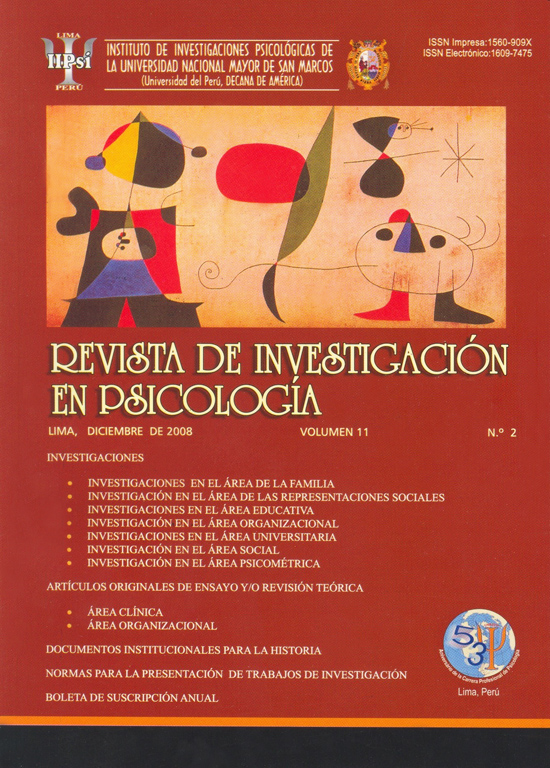Generational Reproduction of child abuse
DOI:
https://doi.org/10.15381/rinvp.v11i2.3813Keywords:
abuse, generational reproduction, potential for abuse, memories of abuseAbstract
The objective of this research is the study of the abuse rising in two generations, of parents and children and establishing the relationship between background child’s abuse with the potential abuse. The sample is comprised of 441 students and 303 parents who agreed to answer the Memories of Abuse Questionnaire. The used instruments were the Child History Questionnaire adapted for the purpose of this research, the Inventory of Potential Child Abuse (Milner, J. 1977), adapted by De Paul, Arruabarrena, Múgica and Milner, 1999 in Spain. The results show that both of them (parent and child) the emotional abuse is more frequently followed by physical and sexual abuse, comparing the two generations, the parents show a higher prevalence of abuse. Also the potential for abuse is significantly associated with history of physical abuse and emotional abuse and the children`s abuse is significantly associated with a parents abuse history, however also reported that the reproductive cycle of generational abuse is not all.Downloads
Published
Issue
Section
License
Copyright (c) 2008 Lupe García Ampudia, Oswaldo Orellana M., Ricardo Pomalaya V., Elisa Yanac Reynoso, Carmela Malaver S., Edgar Herrera F., Noemi Sotelo L., Lilia Campos C., Lidia Sotelo L., Daphne Orellana García, Katherine Velasquez M.

This work is licensed under a Creative Commons Attribution-NonCommercial-ShareAlike 4.0 International License.
THE AUTHORS RETAIN THEIR RIGHTS:
a. The authors retain their trademark and patent rights, and also on any process or procedure described in the article.
b. The authors retain the right to share, copy, distribute, execute and publicly communicate the article published in the Journal of Research in Psychology (for example, place it in an institutional repository or publish it in a book), with acknowledgment of its initial publication in the Journal of Research in Psychology.
c. Authors retain the right to make a subsequent publication of their work, to use the article or any part of it (for example: a compilation of their work, lecture notes, thesis, or for a book), provided that they indicate the source. of publication (authors of the work, magazine, volume, number and date).























